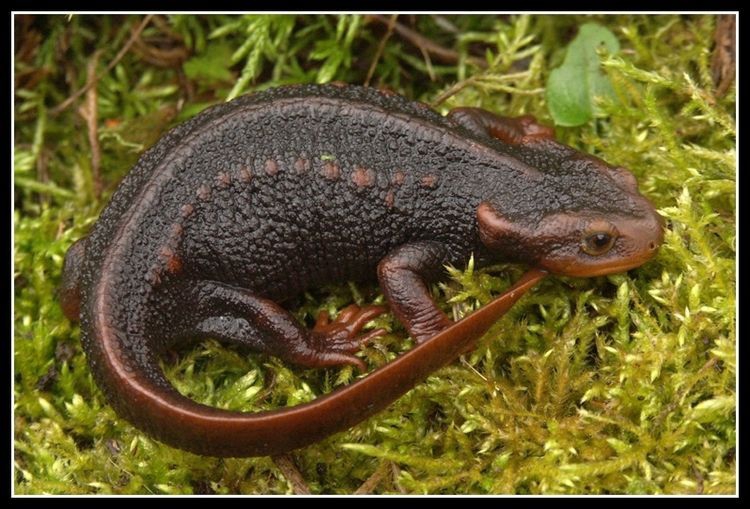| Citation |
|
Description |
Geographic Range [top]
Range Description: This species ranges from India (West Bengal and Sikkim and smaller, isolated populations in Manipur and Arunachal Pradesh) and eastern Nepal through the Kachin and Shan Hills of Myanmar to western Yunnan (Longchuan county and its vicinity), China and scattered mountains in northern Thailand. It has recently been recorded from Lai Chau and Lao Cai Provinces in northwestern Viet Nam. It most likely also occurs in Lao Peoples Democratic Republic and Bhutan, although at present there are no known records. It probably occurs more widely than current records suggest, especially in areas between known sites. The boundary between this species and Tylototriton shanjing is not clear. In the southern part of its range it is generally an upland species occurring at elevations between 1,000-3,000 m asl. In the northern part of its range it is reported from low hills below 1,000 m asl.
Countries occurrence:
Native:
China; India; Myanmar; Nepal; Thailand
Possibly extinct:
Viet Nam
Additional data:
? Lower elevation limit (metres): 1000
? Upper elevation limit (metres): 3000
Range Map: Click here to open the map viewer and explore range.
Population [top]
Population: It is an uncommon species through most of its range, although it was reported locally common in Myanmar (Gyi 1969). Reports from different sites in northern West Bengal varied from less than 10 salamanders to hundreds of individuals per site (Hedge and Deuti 2007). It might be extinct in Viet Nam.
Current Population Trend: Unknown
Additional data:
? Population severely fragmented: No
Habitat and Ecology [top]
Habitat and Ecology: Its terrestrial habitat is largely moist forest, with the animals generally remaining close to water. Aquatic habitats include various freshwater sources, including permanent pools, forest streams and even small waterbodies. Breeding occurs in the shallow areas of these waterbodies; there is little information on egg deposition although the larval stage is known to be relatively short. During the dry summer period animals may go into aestivation.
Systems: Terrestrial; Freshwater
Use and Trade [top]
Use and Trade: This species is used as bait for fishing in Myanmar and is also harvested for use as traditional medicine in India. In addition, it is in demand in the domestic and international pet trade.
Threats [top]
Major Threat(s): Habitat loss from infrastructure development and regular human-induced forest fires (in Southeast Asia) are a threat to this species. Water pollution from agrochemicals and domestic detergents, and the extraction of water for irrigation are also degrading its habitat. The species is considered a bad omen and thus killed in Myanmar in certain areas (Gyi 1969). It is used as bait for fishing in Myanmar and is in demand in the domestic and international pet trade. It is also harvested for use as a traditional medicine in India. In northern West Bengal, the flatlands in the Darjeeling Hills are being converted to housing and tourist complexes, while the slopes are being converted to tea estates. This region also suffers from livestock grazing, siltation and pollution (from pesticide runoff and domestic waste) of waterbodies and introduced carp (Hedge and Deuti 2007).
Conservation Actions [top]
Conservation Actions: It is protected by legislation in Nepal, India, China and Thailand. Its range overlaps at least five protected areas in Thailand, one in China, one in India (Namttingpokkdi Wildlife Sanctuary, West Bengal) and one (Kanchanjanga Conservation Area) in Nepal. It has been bred in captivity in Europe.
Citation: Peter Paul van Dijk, Guinevere Wogan, Michael Wai Neng Lau, Sushil Dutta, Tej Kumar Shrestha, Debjani Roy & Nguyen Quang Truong. 2009. Tylototriton verrucosus. The IUCN Red List of Threatened Species 2009: e.T59487A11934912. http://dx.doi.org/10.2305/IUCN.UK.2004.RLTS.T59487A11934912.en. Downloaded on 08 February 2017.
Disclaimer: To make use of this information, please check the .
Feedback: If you see any errors or have any questions or suggestions on what is shown on this page, please provide us with feedback so that we can correct or extend the information provided
|

